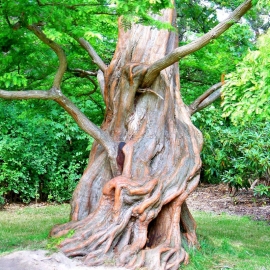









Organic Dawn Redwood Seeds (Metasequoia Glyptostroboides)
1.14 €
It was only discovered in 1943 and due to World War 2 was not studied further until 1946 and only finally described as a new living species, metasequoia glyptostroboides, in 1948. Only one natural forest containing around 5400 trees is known to exist.
-
Organic Cheesewoods (Pittosporum)
The Dawn Redwood, is a fast-growing, critically endangered deciduous conifer and is the sole living species of the genus Metasequoia and one of three redwood species. It is native to the Sichuan-Hubei region of central southern China. Although it is the shortest of the redwood family, it grows to at least 200 ft (61m) in height.
It was only discovered in 1943 and due to World War 2 was not studied further until 1946 and only finally described as a new living species, metasequoia glyptostroboides, in 1948. Only one natural forest containing around 5400 trees is known to exist.
Dawn redwood has proved an easy, fast growing tree in temperate regions, and is now widely planted as an ornamental tree. Planted specimens have already reached 25–40m (82–130 ft) in height and 1–1.3m (3.3–4.3 ft) in diameter, despite being in cultivation for less than sixty years.
It is tolerant of air pollution and very hardy, down to lows of -25°F (-32°C) and is very tolerant of soggy, water-logged soils as in the wild it is adapted to growing in flood plains. In drier regions it must be grown adjacent to a body of water such as a pond or stream.
The seed that I am offering was collected from sustainable populations in China. Please note that metasequoia seed always has a relatively low percentage of viable seeds, typically only 15-20% and I will include germination and after care information with every order.
How to Grow
Dawn Redwood are difficult to germinate as they are very particular about the conditions they need for germination. Even after the seeds do germinate, they require a skill to get them beyond the seedling stage. It is these difficulties that make them especially rewarding for those who succeed in getting them to grow.
The seeds should first be soaked for 24 hours in clean water. Once the water has been drained off you need to cold stratify your seeds in the fridge for around 2 weeks at around 4 Celsius. The soaked seeds need to be put in or on some type of non-soil growing medium such as a damp paper towel, rockwool or sterile sand or vermiculite. I find that vermiculite works well.
After placing your seeds in/on the moist substrate that you have chosen to use, you need to put them into a re-sealable plastic bag. Place the bag of seeds into the fridge and check them regularly to make sure the substrate remains damp but not saturated. After 2 weeks, the seeds should be ready to sow and will need to be placed at around room temperature (21 C/70 F for germination.
You can choose to germinate the seeds in the bag and then transplant them into compost or you can plant them onto compost and wait for seedlings to appear. If you are using the second option, cover the seeds with a fine layer of sieved compost or vermiculite. I find that covering the seed with a thin layer of vermiculite can give greater numbers of seedlings than covering with sand or compost. Do not bury them deeper than this as burying them too deep can ruin your chances of success.
The advantage of germinating them before moving them to soil is that the compost can hold more fungal and bacterial agents than your starting substrate.
Redwood seeds require a mineral-rich soil with good drainage. It is especially important that the seedlings do not get too wet as this makes them liable to damping off and other fungal diseases. Do not water too much or too frequently. Allow the soil to dry out only a little between watering. Dawn Redwood seedlings will die very easily if the compost they are in dries out even once. Expose them to increasing light levels gradually.
The seedlings also do not grow well in hot, humid conditions. In the early summer, gradually harden off the seedlings and place them outside in a semi-shaded position. Grow them in a container for at least 2 years before planting them in a permanent position.
